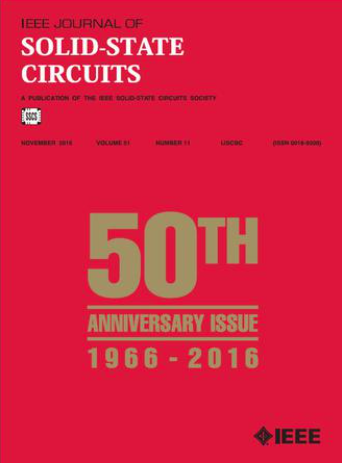HUNBN,用于边缘CNN应用的16纳米数字内存计算SoC,在系统级实现24 TOPs/W (4b)
IF 5.6
1区 工程技术
Q1 ENGINEERING, ELECTRICAL & ELECTRONIC
引用次数: 0
摘要
这项工作提出了HUNBN,一个全数字内存计算(DIMC)片上系统(SoC),采用16纳米FinFET CMOS技术实现。专为边缘卷积神经网络(CNN)应用而设计,基于dimc的架构通过显着降低静态随机存取存储器(SRAM)相关的能量来提高能源效率。在宏观层面,采用三个关键技术来优化能量和面积效率:1)采用代工厂推制规则6T位元阵列;2)拆分MAC工作流;3)同步DIMC操作。在系统级别,数据移动被定制为有效地支持CNN和转置CNN层。该设计在宏级实现126 TOPS/W(4位MAC),在系统级实现24 TOPS/W,同时提供508 kB/mm2的内存密度和1.27 K MAC单位/mm2的计算密度。这为边缘CNN应用提供了一个高能效、可扩展的平台。本文章由计算机程序翻译,如有差异,请以英文原文为准。
HUNBN, a 16-nm Digital In-Memory-Compute SoC for Edge CNN Application Achieving 24 TOPs/W (4b) at System Level
This work presents HUNBN, a fully digital in-memory-compute (DIMC) system-on-chip (SoC) implemented using 16-nm FinFET CMOS technology. Designed for edge convolution neural network (CNN) applications, the DIMC-based architecture enhances energy efficiency by significantly reducing the energy associated with static random access memory (SRAM). At the macro level, three key techniques are employed to optimize energy and area efficiency: 1) the adoption of a foundry-pushed rule 6T bit-cell array; 2) a split MAC workflow; and 3) synchronous DIMC operation. At the system level, the data movement is tailored to efficiently support both CNN and transposed CNN layers. The proposed design achieves 126 TOPS/W (4-bit MAC) at the macro level and 24 TOPS/W at the system level, while offering a memory density of 508 kB/mm2 and a compute density of 1.27 K MAC units/mm2. This enables a highly energy-efficient, scalable platform for edge CNN applications.
求助全文
通过发布文献求助,成功后即可免费获取论文全文。
去求助
来源期刊

IEEE Journal of Solid-state Circuits
工程技术-工程:电子与电气
CiteScore
11.00
自引率
20.40%
发文量
351
审稿时长
3-6 weeks
期刊介绍:
The IEEE Journal of Solid-State Circuits publishes papers each month in the broad area of solid-state circuits with particular emphasis on transistor-level design of integrated circuits. It also provides coverage of topics such as circuits modeling, technology, systems design, layout, and testing that relate directly to IC design. Integrated circuits and VLSI are of principal interest; material related to discrete circuit design is seldom published. Experimental verification is strongly encouraged.
 求助内容:
求助内容: 应助结果提醒方式:
应助结果提醒方式:


